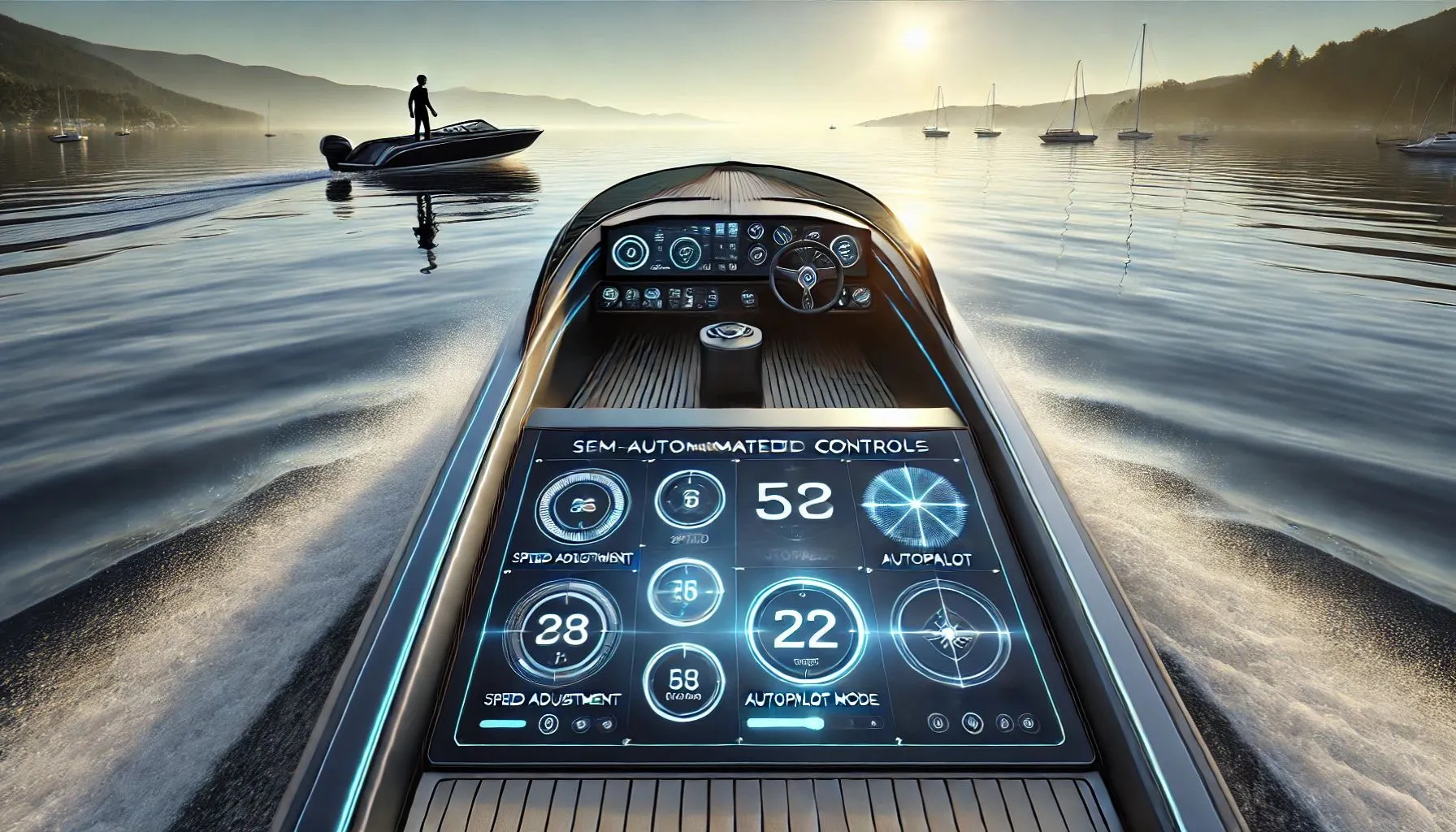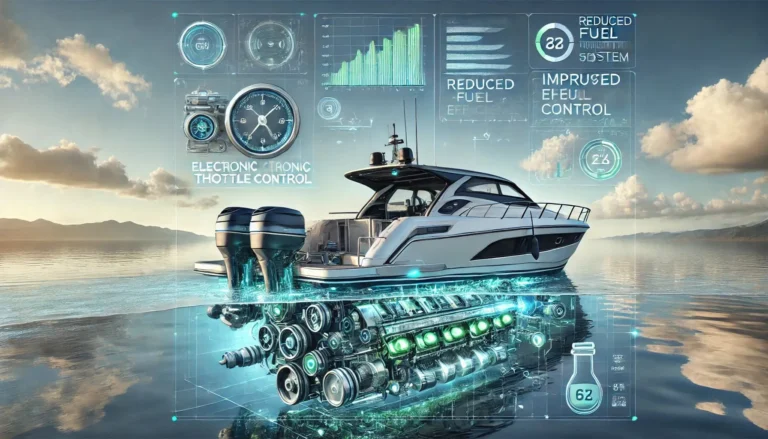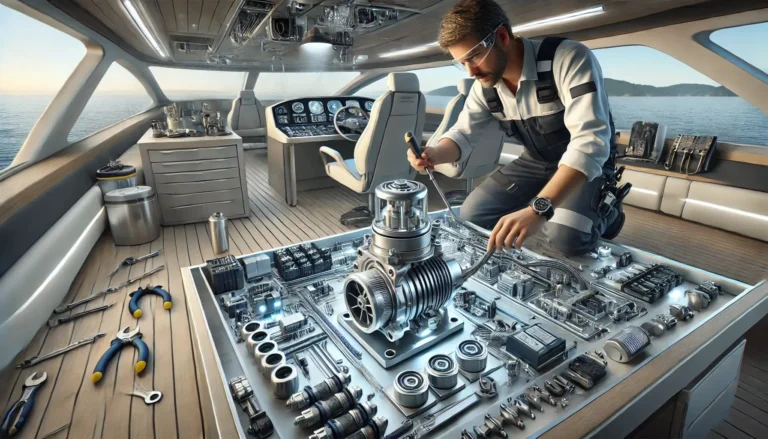Benefits of Semi-Automated Controls in Modern Electric Boats

Semi-automated controls are transforming the way modern electric boats operate, blending manual control with automated precision. These systems enhance performance, safety, and efficiency while catering to a wide range of users, from recreational boaters to commercial operators. Below, we explore the key advantages of semi-automated controls in electric boating.
What are Semi-Automated Controls?
Semi-automated controls combine traditional manual input with automated processes. These systems rely on technologies like GPS, sensors, and smart throttles to simplify navigation and energy management. Unlike fully autonomous systems, semi-automated setups offer flexibility, allowing operators to switch between manual and automated modes as needed.
For more insights on throttle actuator assemblies and their role in electric boats, refer to Throttle Actuator Assembly for an Electric Boat RV4DAYSD602A
Key Benefits of Semi-Automated Controls
1. Enhanced Precision in Navigation
- Fine-tuned adjustments to speed, steering, and propulsion ensure smooth navigation.
- Integrated GPS and autopilot systems allow for accurate route-following and docking, reducing errors.
2. Energy Efficiency
- Automated controls optimize energy consumption, extending the range of electric boats.
- Regenerative braking systems recover energy during deceleration, further improving efficiency.
3. Ease of Operation
- Intuitive user interfaces make boat operation accessible even for beginners.
- Features like automated throttle adjustments and course corrections minimize operator workload.
For more insights on the importance of corrosion-resistant components in marine systems, visit Importance of Corrosion-Resistant Components in Marine Systems
4. Improved Safety
- Collision avoidance systems detect nearby vessels and obstacles, alerting operators or taking preemptive action.
- Electronic stability controls maintain balance in turbulent conditions, enhancing passenger safety.
5. Reduced Operator Fatigue
- Automation of repetitive tasks, such as maintaining speed or steering, allows operators to focus on situational awareness.
- Long-distance journeys become less taxing, thanks to autopilot features.
6. Customizable Controls
- Operators can toggle between manual and automated modes, adapting to specific scenarios.
- Custom settings support activities like fishing, cruising, or transporting cargo.
7. Simplified Maintenance and Diagnostics
- Real-time monitoring systems provide insights into battery health and propulsion performance.
- Automated alerts help prevent breakdowns, ensuring a longer lifespan for components.
For a detailed guide on integrating throttle actuators into electric propulsion, refer to Steps to Integrate Throttle Actuators into Electric Propulsion Systems
8. Environmental Benefits
- Optimized power usage reduces emissions in hybrid-electric boats and supports eco-friendly navigation practices.
- Automation ensures adherence to no-wake zones and speed restrictions in sensitive ecosystems.
9. Improved Docking and Mooring
- Automated docking systems use sensors and GPS to maneuver boats precisely in tight spaces.
- Hands-free docking minimizes stress and risk of damage, especially for inexperienced operators.
10. Scalability for Future Automation
- Semi-automated systems provide a foundation for integrating fully autonomous technologies in the future.
Applications in Different Boating Scenarios
Recreational Boating
- Casual boaters benefit from features like cruise control and easy docking, making electric boating more enjoyable.
- Semi-automated systems lower the skill barrier for new users.
For more insights on how electronic throttle control enhances marine system efficiency, check out How Electronic Throttle Control Improves Marine Efficiency
Commercial Operations
- Businesses gain operational efficiency with consistent speeds and energy optimization.
- Reduced fuel or electricity costs improve profitability.
Fishing and Sporting
- Precision positioning helps anglers target fishing zones effectively.
- Automated controls reduce manual effort during long trips or competitions.
Challenges Solved by Semi-Automated Systems
- Simplifying Complex Operations:
- Automation reduces the steep learning curve for new operators.
- Improving Efficiency:
- Smart systems minimize wasted energy and time.
- Enhancing Safety:
- Real-time monitoring and proactive adjustments mitigate risks during navigation.
Supporting Technologies
- Integrated Sensors: Measure parameters like speed, depth, and proximity to obstacles.
- Smart Throttle Control: Optimizes battery usage and power output dynamically.
- Connectivity: Wi-Fi and Bluetooth enable remote monitoring and software updates.
For more insights on common challenges in marine throttle actuator installations, check out Common Challenges in Marine Throttle Actuator Installations
Future Trends
The evolution of semi-automated controls will bring even greater innovations, including:
- AI Integration: Predictive navigation and energy optimization tailored to user preferences.
- IoT Expansion: Remote diagnostics and enhanced connectivity for seamless operations.
- Enhanced User Interfaces: Simplified controls for broader accessibility and customization.
Conclusion
Semi-automated controls are redefining the electric boating experience by blending convenience, safety, and efficiency. Whether for recreational use, commercial operations, or specialized activities like fishing, these systems cater to a diverse range of needs. With future advancements on the horizon, semi-automated controls promise to make electric boating even more accessible and environmentally friendly.
Their flexibility, energy efficiency, and safety features make them an indispensable innovation in the world of modern electric boats.


